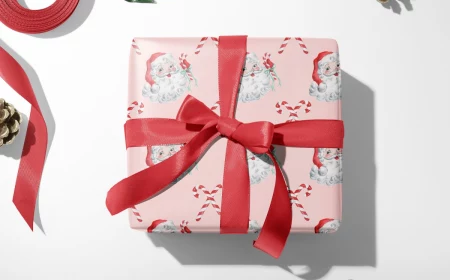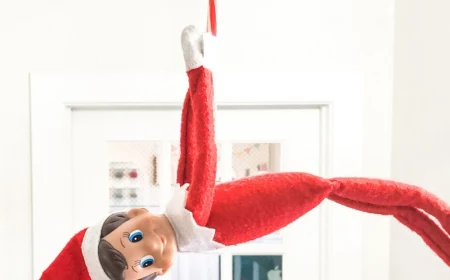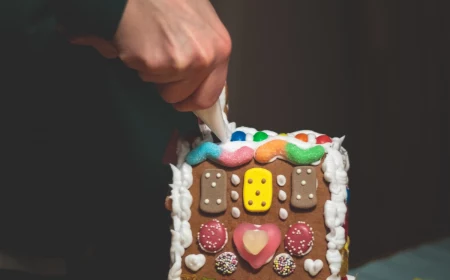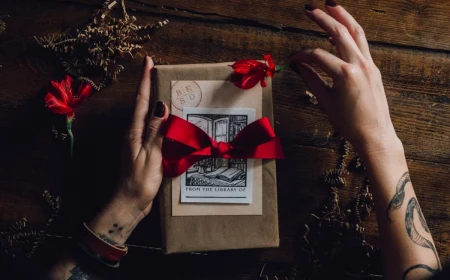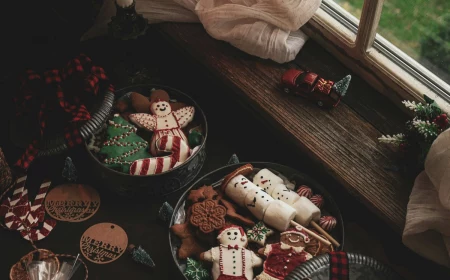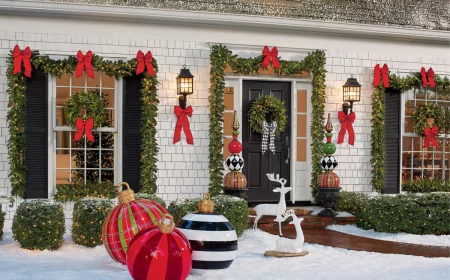The Real Deal on Gifting: Choosing Toys Kids Will Actually Play With
Every year, I watch well-meaning adults dive headfirst into the chaos of shopping for kids. Armed with wish lists, everyone’s chasing that perfect moment of holiday morning joy. But I’ve also seen the aftermath, and honestly, it’s not always pretty. The pile of plastic forgotten by New Year’s. The expensive, flashy toy that delivers five minutes of excitement and a lifetime of clutter.
In this article
- The ‘Why’ Behind the Toy: What’s Really Going On in Their Brains?
- Pro-Level Techniques for Thoughtful Gifting
- Okay, But What If They ONLY Want the Hot Character Toy?
- A Practical Guide: Gifting by Age and Stage
- Navigating Tricky Gifting Situations
- The Bottom Line: Safety Is Non-Negotiable
- Inspirational Gallery
After spending more than two decades in early childhood development, I can tell you this: the most memorable and valuable gifts are rarely the ones kids scream for in the store.
A great gift isn’t just an object; it’s a tool for growth, a prompt for connection, and a spark for imagination. It respects where a child is at and what a family values. My goal here isn’t to give you a shopping list, but to share a whole new way of thinking about gifts—an approach I’ve honed from thousands of hours observing kids at play. It’s about choosing things that matter long after the wrapping paper is gone.
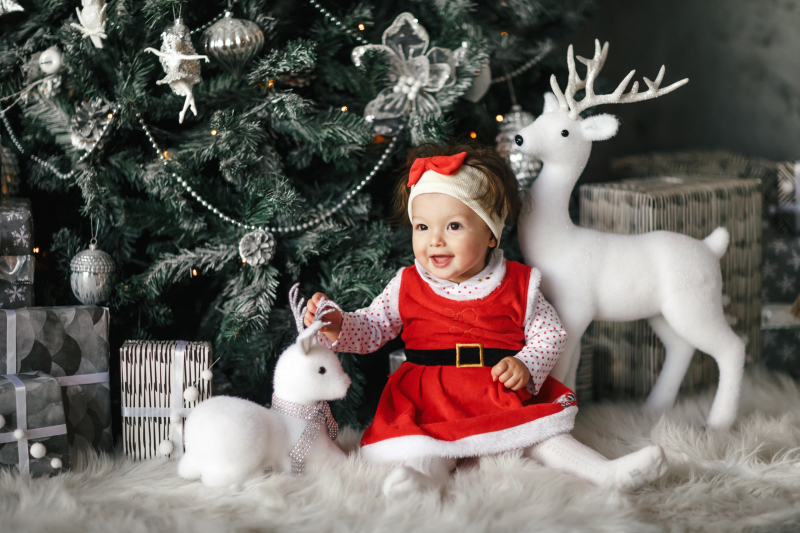
The ‘Why’ Behind the Toy: What’s Really Going On in Their Brains?
Before you even think about what to buy, it helps to understand what’s happening inside a child’s head. Kids don’t just play; they’re working. Play is how they build their brains, piece by piece. When we get the job they’re trying to do, we can give them much better tools for it.
The pros have a fancy term for it, but the concept is simple: you want to find a gift that’s just a little bit challenging. It should be something a child can almost do on their own but can totally master with a little help. This is the sweet spot for learning. A puzzle that’s too easy is boring. One that’s way too hard is just frustrating. But a puzzle that requires a bit of teamwork? That builds skills and relationships at the same time.
Think of it this way:
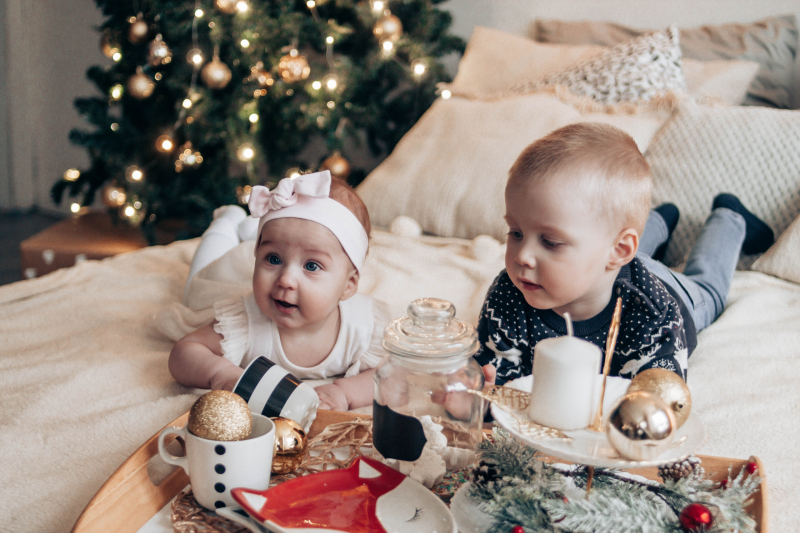
- For babies and young toddlers, the main job is sensory exploration. They learn by touching, tasting, and, yes, dropping everything. The ‘why’ here is pure discovery. A simple wooden block is a powerhouse—it has weight, texture, a smell, and makes a satisfying ‘clunk.’ Compare that to a plastic toy that just flashes and sings when you press one button. The block offers endless possibilities; the electronic toy offers one repetitive outcome.
- For preschoolers, it’s all about imagination. A cardboard box isn’t trash; it’s a rocket ship. A stick isn’t just a stick; it’s a magic wand. The ‘why’ for this age is fueling that incredible creativity. This is where open-ended toys are king. We’re talking building blocks, clay, dress-up clothes, and art supplies. They don’t tell the child how to play; they invite the child to invent their own rules.
- For elementary school kids, thinking gets more logical. They start to love strategy, rules, and collecting. The ‘why’ for this age is helping them organize their world and think ahead. Beginner board games are fantastic for teaching turn-taking and planning. Hobby kits, like a simple model plane or a knitting set, teach them to follow steps to reach a cool goal.
Once you start thinking this way, your perspective shifts. You’re no longer just buying a ‘toy.’ You’re buying a tool for exploration, a prop for storytelling, or an introduction to strategy.
Pro-Level Techniques for Thoughtful Gifting
In my work, I rely on a few core principles that cut through the advertising noise and focus on what truly helps a child.
The ‘One Toy, Many Uses’ Principle
I will always, always choose an open-ended toy over a single-purpose one. In my classrooms, a simple set of rainbow-colored silk scarves saw more action than any battery-operated gadget. One day, they were superhero capes. The next, they were blankets for dolls. The day after, they were the ‘water’ in a river the kids had to cross. This is the stuff that builds real creativity.
When you’re in a store, ask yourself: ‘How many different ways can a child play with this?’ If the answer is ‘one,’ you might want to put it back on the shelf. Instead, look for classics that have stood the test of time:
- Blocks: Whether they’re classic wood, plastic bricks (like LEGO or Duplo), or cool magnetic tiles (like Magna-Tiles), these are the ultimate creative toy. A small starter set from a quality brand like Hape or Melissa & Doug might run you $30-$50, while a larger, more complex set could be over $100. For a budget-friendly option, a big bag of Mega Bloks for around $20 is a fantastic choice for toddlers.
- Art Supplies: A good set of crayons, washable markers, paints, and a big ream of paper is a gift that provides months of creative expression.
- Playdough or Clay: So simple, yet so good for sensory development and strengthening the little hand muscles they need for writing.
- Figurines: Simple, non-specific animal or human figures can be the stars of a million different stories.
Open-Ended vs. Closed-Ended Toys: What’s the Difference?
So, what’s the big deal? Think about it like this. A closed-ended toy, like a movie character’s specific vehicle that makes one sound, has a clear ending. The child pushes the button, it makes the sound, and the play is over. It’s fun for a minute, but the replay value is low.
An open-ended toy, like a set of LEGO bricks, has no predetermined end. It can become a car today, a house tomorrow, and a spaceship next week. It builds problem-solving skills, spatial reasoning, and persistence. The child is in charge, not the toy. That’s the key difference, and it’s why these toys have so much more staying power.
The Art of ‘Observational Gifting’
Instead of asking a kid what they want, try watching what they do. Experts look for ‘schemas’—those repeated patterns of behavior that show what a child’s brain is driven to learn. You can do this, too!
Here’s your challenge: Spend 15 minutes just watching them play, without interrupting. Write down 3 verbs that describe their actions (e.g., stacking, sorting, wrapping, connecting, dumping). Now, go find a toy that supports one of those verbs.
Have a toddler who is obsessed with putting things into containers and dumping them out? They’re exploring the ‘enclosing’ schema. A perfect gift would be a set of nesting bowls, a shape sorter, or a small wagon. A child who loves to climb on everything is building their big-muscle skills. A small indoor climbing triangle would be incredible. This method shows a child you see them, and that’s a powerful gift all by itself.
Okay, But What If They ONLY Want the Hot Character Toy?
Let’s be real. We can talk about beautiful wooden toys all day, but sometimes your nephew will only accept a Paw Patrol-branded hovercraft. I get it. You don’t want to be the person who disappoints them.
My go-to strategy here is the ‘one for them, one for development’ approach. Go ahead and get that talking Bluey doll they’ve been begging for. But pair it with something that encourages creativity. For instance, wrap up the doll with a big container of blue playdough, some craft sticks, and googly eyes. This way, you’re respecting their wish while also gently nudging them toward more open-ended play. It’s a win-win.
A Practical Guide: Gifting by Age and Stage
Here’s how I apply these ideas to different age groups. These are just guidelines, of course—you know the child best!
For Newborns (0-6 months)
The focus here is on sensory input and, honestly, supporting the exhausted parents.
- Thoughtful Gifts: High-contrast black-and-white board books (newborns see contrast better than color), a simple wooden rattle, or a soft play mat with different textures.
- Go-To Gift Idea: The best gift is often one that helps the parents. A gift certificate for a meal delivery service or a sincere offer to come over and hold the baby so a parent can shower is priceless.
- Safety First: Avoid anything with small parts. Everything goes in the mouth, so make sure materials are non-toxic and smooth.
For Infants (6-18 months)
This is the age of ‘What happens if I do this?’
- Thoughtful Gifts: Stacking rings, a classic shape-sorter, or chunky wooden puzzles. A stable push-toy is great for new walkers. Board books with flaps are always a hit.
- Go-To Gift Idea: A set of colorful stacking cups. They’re cheap (usually under $10), versatile, and perfect for this age.
- Heads up! I once saw a family give an 18-month-old a complex electronic tablet. The child spent the entire time trying to chew on the corner. The gift just didn’t match the stage. Simple is almost always better.
For Toddlers (1.5 – 3 years)
Welcome to the world of pretend play and big, BIG feelings.
- Thoughtful Gifts: A doctor’s kit, a play kitchen, or a baby doll. These all encourage pretend play, which is how toddlers process their world and develop empathy.
- Go-To Gift Idea: When in doubt, buy a set of Duplo blocks. You absolutely cannot go wrong. A starter set costs around $20-$30 and provides endless hours of fun.
- Safety First: Be wary of toys with long strings or cords. And make sure any art supplies, like crayons or paint, are explicitly labeled non-toxic.
For Preschoolers (3-5 years)
Imagination and social skills are exploding right now.
- Thoughtful Gifts: Dress-up clothes are fantastic. Beginner board games that teach colors and turn-taking are great for family time. Building sets like LEGOs, Magna-Tiles, or classic wooden blocks allow for more complex creations.
- Go-To Gift Idea: A high-quality set of art supplies and an easel. It encourages creativity and good posture for pre-writers. You can get a decent tabletop easel for about $25.
For Early School-Aged Children (6-9 years)
Hobbies, rules, and friendships become way more important.
- Thoughtful Gifts: An engaging chapter book series can create a lifelong reader. More complex LEGO sets, beginner science kits, or a starter kit for a hobby like gardening are wonderful.
- Go-To Gift Idea: A more advanced, theme-based LEGO set. It teaches them to follow instructions and gives them a cool model to play with afterward. Prices range from $20 for a small set to $100+ for massive ones.
For Pre-Teens and Teens (10+)
It’s all about identity, social connection, and mastering skills.
- Thoughtful Gifts: Giving cash or a gift card can feel impersonal, but it’s often a respectful nod to their growing independence. Frame it thoughtfully! Pair a bookstore gift card with a nice journal and pen. Pair a video game gift card with a good-quality headset. You’re showing you support their actual interests.
- Go-To Gift Idea: Tickets to a concert or sporting event for them and a friend. The experience and memory will last way longer than another object.
The Child Who ‘Has Everything’
This child probably doesn’t need more things. Consider gifts that aren’t ‘things’ at all, like a donation to an animal shelter in their name. Or, my personal favorite, create a ‘Boredom Buster Jar.’ It’s the best $5 gift ever.
- Step 1: Get a clean mason jar or any small container.
- Step 2: Cut up 30-50 small slips of paper.
- Step 3: On each slip, write one simple, fun activity (‘Build a pillow fort,’ ‘Have a paper airplane contest,’ ‘Bake cookies with a grown-up,’ ‘Draw a treasure map’).
- Step 4: Decorate the jar. Done! You’ve given the gift of inspiration.
Gifting for a Child with Special Needs
The golden rule here is simple: always, always ask the parents first. They are the experts. Ask about their child’s specific interests and sensitivities. Is the child sensitive to loud noises or bright lights? Do they benefit from weighted items or specific textures? The goal is inclusion and joy, not frustration. A thoughtful conversation is the kindest first step.
The Family with Different Values
Before you buy, take a moment to consider the family’s household rules. Are they a screen-free family? A beautiful wooden toy will be appreciated far more than the latest video game. Do they live in a tiny apartment? A giant drum set is not a gift; it’s a burden. When in doubt, a quiet, respectful chat with the parents saves everyone a lot of stress.
The Bottom Line: Safety Is Non-Negotiable
This is the part I take very seriously. A fun gift is a safe gift.
- Button Batteries: To be frank, if a toy for a young child has a button battery, I don’t buy it. Period. These small, coin-sized batteries are a life-threatening danger if swallowed. If you absolutely must, make sure the battery compartment is secured with a screw, and check it yourself before you wrap it.
- Second-Hand Toys: I love sustainable gifting, but you have to be careful. Vintage painted toys can contain lead. Always check the U.S. Consumer Product Safety Commission (CPSC) website for recalls, and inspect any used toy for cracks, splinters, or loose parts.
- Age on the Box: That ‘Ages 3+’ label is a safety guideline, not a suggestion. It means the toy hasn’t been tested for the safety of a one-year-old who will definitely put it in their mouth. It likely contains small parts that are a serious choking hazard.
In the end, choosing a gift is an act of love. It’s a chance to show a child that you see them, you get them, and you want to support them on their journey. So forget the pressure to find the ‘hottest’ toy of the year. Focus on finding a great tool that will help them do the important work of growing up. The most cherished gift you can give is your focused attention. If your present helps you do that—reading a book together, building a castle, or playing a game—then you’ve already chosen perfectly.
Inspirational Gallery
What if the best gift isn’t a toy at all?
Consider gifting an experience. A membership to the local children’s museum, a pass for the zoo, or a voucher for a pottery class creates memories that far outlast the novelty of a new object. These gifts encourage family time, spark curiosity in a real-world setting, and don’t contribute to playroom clutter. They are an investment in a child’s passions, not just their possessions.
A 2018 study found that when toddlers were in a room with fewer toys, they played with each single toy for longer, in more varied and sophisticated ways.
This highlights the power of a curated, minimalist approach. Instead of a mountain of options, a handful of high-quality, open-ended toys can actually foster deeper concentration and creativity. It’s a classic case of less being so much more.
The Open-Ended Toy Test: Before you buy, ask yourself: can this toy be used in more than three ways? A character figurine that only says one catchphrase has a very limited script. But a set of simple wooden blocks, like those from Grimm’s or Hape, can become a castle, a car, a fence for toy animals, or abstract art. If a toy relies more on the child’s imagination than on its own batteries, it’s a winner.
- Fosters problem-solving skills.
- Encourages independent, focused play.
- Builds hand-eye coordination and spatial reasoning.
The secret? A classic jigsaw puzzle. For younger children, start with chunky wooden puzzles from brands like Melissa & Doug. For older kids, a beautiful 100-piece puzzle from Eeboo featuring unique art can become a quiet, collaborative family activity.
Wooden Toys: Offer a rich sensory experience through their weight, subtle texture, and even smell. They are durable, often made with sustainable practices (look for brands like PlanToys), and their simplicity encourages imaginative play.
High-Quality Plastic Toys: Don’t discount them entirely. Brands like LEGO or Magna-Tiles offer incredible opportunities for engineering and creativity that are difficult to replicate. The key is choosing plastics designed for longevity and specific developmental goals, not disposability.
A simple shift in language can reframe the entire gift-giving process for a child. Instead of asking
The allure of a ‘some assembly required’ gift is that it begins with a shared project. Building a model rocket, assembling a dollhouse, or even putting together a new bike with a parent or grandparent isn’t a chore; it’s the first act of play. It teaches patience, the value of following instructions, and the deep satisfaction of creating something together before the solo play even begins.
Are subscription boxes worth the hype?
For many families, yes. A subscription from a company like KiwiCo or Lovevery acts as a gift that arrives every month, perfectly tailored to a child’s developmental stage. It solves the ‘what to get’ dilemma for the giver and provides a structured, engaging activity that parents and children can discover together, often blending science, art, and engineering in one small, exciting package.
One of the most overlooked play resources is the natural world. A ‘Nature Explorer’s Kit’ can be a magical gift. Pack a small backpack with a magnifying glass, a pair of binoculars, a small notebook for leaf rubbings, and a guide to local birds or insects. It costs very little but provides a powerful prompt to get outside and engage with the world in a detailed, curious way.

